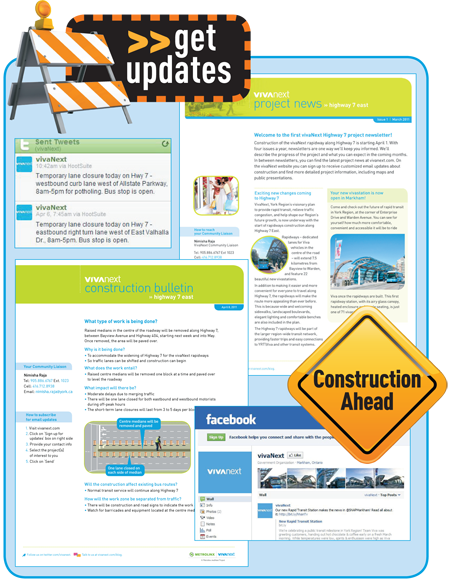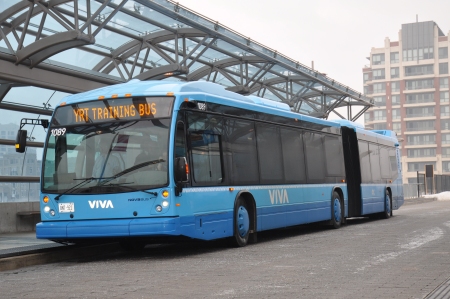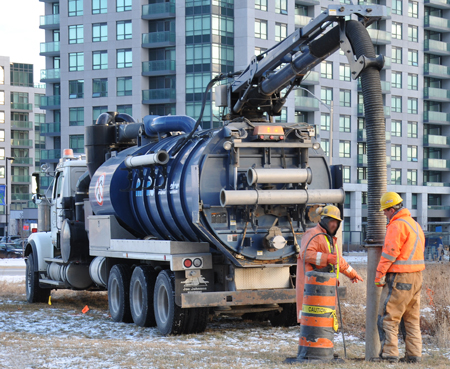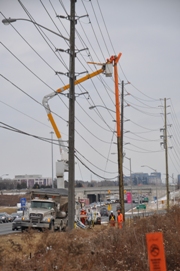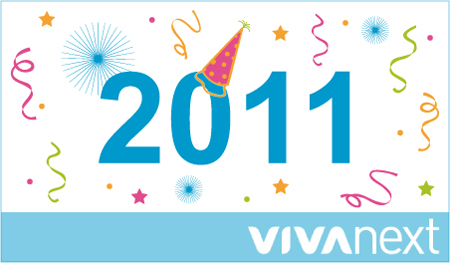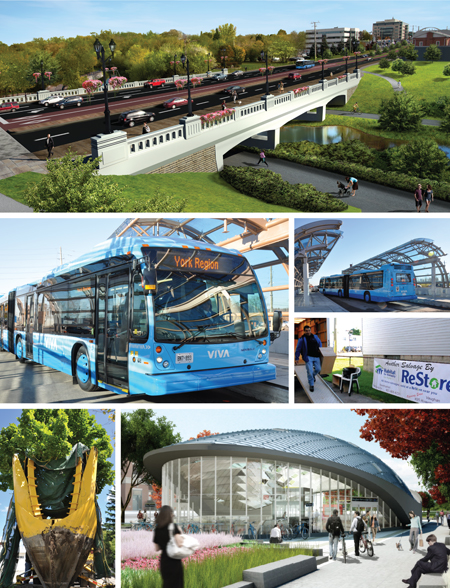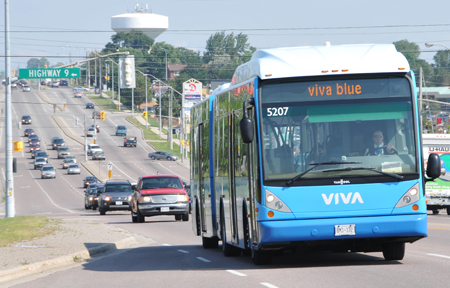For months now we’ve been talking about the construction you’ll be seeing on Davis Drive in Newmarket, and on Highway 7 East in Markham and Richmond Hill. Now that spring is here, several construction projects are happening on York Region’s roads, including vivaNext rapidway construction.
Construction can include temporary lane closures, occasional bus stop closures or relocations and sidewalk detours. We know how frustrating these disruptions can be for drivers, transit users and pedestrians. That’s why we’re preparing you with information about why construction is happening, and where and when.
Why is construction happening? The practical reason is to build a rapid transit system that’s not delayed by congested traffic. Provincial and Regional planning policies outline the big-picture reasons, including two of our goals: to connect Greater Toronto and Hamilton Area communities, and to set the stage for pedestrian friendly and transit-oriented urban corridors.
We also want you to know where and when construction is happening and this can be a challenge, because as with any construction project, not everything goes according to plan. We receive updates directly from construction site managers, and our team works quickly to pass this information to you. We let you know about new information by putting up electronic signs on-site, sending tweets to those who follow us on Twitter and advising radio traffic reporters. When we know about work more than a day in advance we email construction bulletins to everyone who signed up for updates, and we post bulletins on our website and Facebook page. We also give general updates on our projects in our newsletters, weekly blogs and website content.
If you have a suggestion or a question, you don’t have to wait for our updates to find out the answer. We welcome the questions and suggestions we receive when we host public meetings and attend community events, and our Community Liaisons, Andrea and Nimisha, talk to people every day about our projects. We also respond to comments through this blog, via Twitter or Facebook, and our online contact forms. We want to hear from you!
We can’t prevent the lane closures that are required to complete construction, but we hope that knowing the long-term benefits and being prepared for where and when work is scheduled will be a big step in helping you get around.

